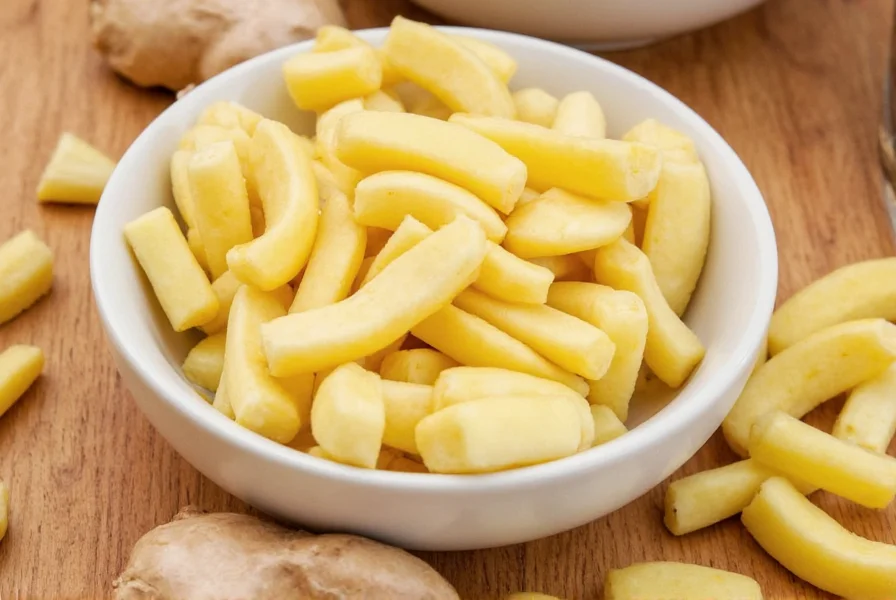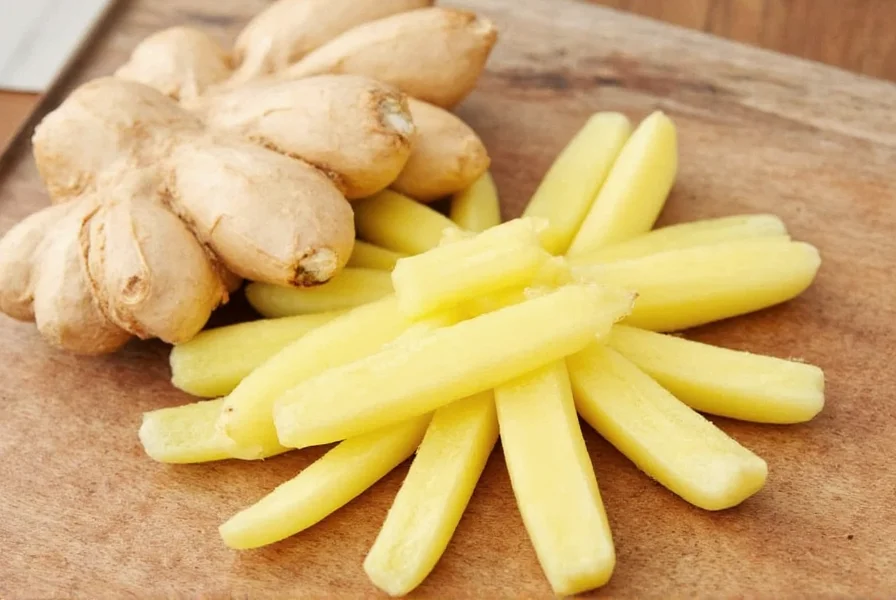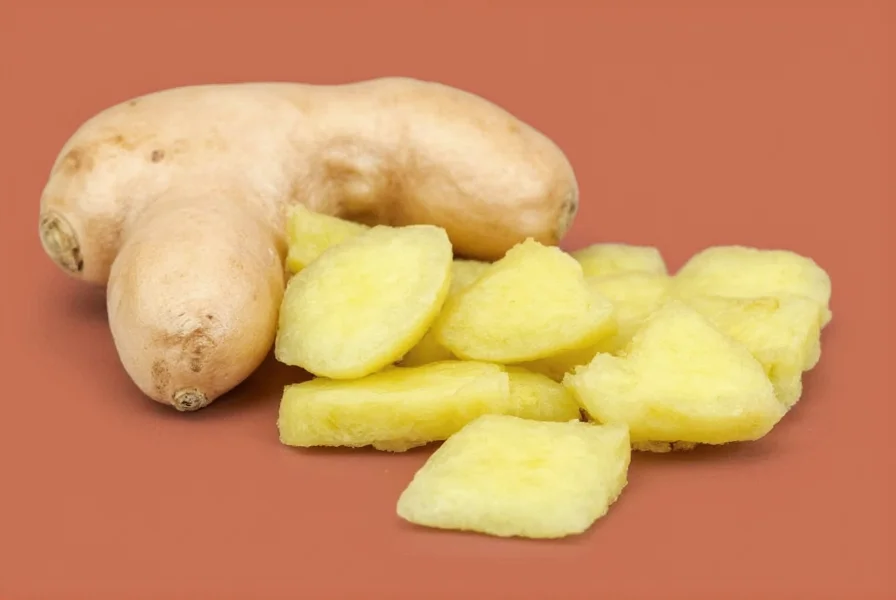Understanding whether do you have to peel ginger depends on several factors including the ginger's age, your recipe requirements, and personal preference. This comprehensive guide explores the science, culinary considerations, and practical techniques for preparing ginger with or without peeling.
When Peeling Ginger Is Optional
Fresh, young ginger typically has thin, tender skin that's perfectly edible. Chefs and home cooks increasingly skip peeling for several compelling reasons:
- Nutrient preservation - Ginger skin contains concentrated antioxidants and fiber
- Time efficiency - Eliminates an unnecessary prep step in many recipes
- Reduced waste - Maximizes usable portions of this valuable root
- Flavor enhancement - The skin contributes subtle earthy notes
Professional kitchens often employ the scraping method rather than traditional peeling. Using the edge of a spoon or specialized ginger scraper removes only surface dirt while preserving the nutrient-rich outer layer. This technique works particularly well for how to clean ginger without peeling when preparing smooth sauces or baked goods where texture matters less.

When Peeling Becomes Necessary
While is ginger skin edible in most cases, certain situations warrant peeling:
| Situation | Reason to Peel | Recommended Technique |
|---|---|---|
| Older, fibrous ginger | Tough skin affects texture | Spoon scraping method |
| Clear beverages | Prevents cloudiness | Peeler or sharp knife |
| Pickling | Ensures even penetration | Peeler for uniform slices |
| Food safety concerns | Removes potential contaminants | Peel 1/16 inch deep |
Scientific Perspective on Ginger Skin
Research published in the Journal of Agricultural and Food Chemistry reveals that ginger's outer layers contain higher concentrations of certain beneficial compounds compared to the inner flesh. The skin contains:
- 6-gingerol - The compound responsible for ginger's signature heat
- Additional dietary fiber (up to 20% more than peeled ginger)
- Higher antioxidant activity in the epidermal layers
This scientific evidence supports why many professional chefs now recommend ginger preparation techniques that preserve the skin whenever possible. The nutritional difference becomes particularly significant when preparing medicinal ginger teas or health-focused recipes.
Practical No-Peel Ginger Preparation Guide
Follow these steps for effective fresh ginger preparation methods without peeling:
- Clean thoroughly - Scrub under cold running water with a soft brush
- Remove surface imperfections - Use spoon edge to scrape away blemishes
- Dry completely - Pat dry for better grating or slicing
- Prepare as needed - Grate, slice, or mince with skin intact
For recipes requiring smooth texture like curries or baked goods, grating unpeeled ginger through a fine-mesh grater works exceptionally well. The skin integrates seamlessly without affecting mouthfeel. This approach answers the common question about do you need to peel ginger before grating - generally no, unless using very mature ginger.

Culinary Traditions Around Ginger Preparation
Cultural cooking practices offer valuable insights into when to peel ginger for recipes. Asian cuisines, where ginger features prominently, often employ different approaches:
- Chinese cooking - Typically peels ginger for clear soups but leaves skin on for stir-fries
- Indian cuisine - Often grates unpeeled ginger directly into spice pastes
- Japanese preparation - Uses specialized graters that process skin along with flesh
- Caribbean methods - Frequently leaves skin on for jerk marinades and teas
These diverse approaches demonstrate there's no universal rule for ginger scraping vs peeling - the technique should match your specific culinary application rather than following rigid conventions.
Food Safety Considerations
While organic ginger typically requires only thorough washing, conventional ginger might have pesticide residues concentrated in the skin. The Environmental Working Group's analysis shows ginger isn't among the "Dirty Dozen" produce with highest pesticide levels, but proper cleaning remains essential.
For maximum safety with non-organic ginger:
- Soak in vinegar-water solution (1:3 ratio) for 15 minutes
- Scrub with vegetable brush under running water
- Remove only visibly damaged areas rather than full peeling
This approach addresses concerns about ginger skin nutrition benefits while minimizing potential chemical exposure - the optimal balance for health-conscious cooking.
Conclusion: Making the Right Choice for Your Recipe
The question do you have to peel ginger ultimately depends on your specific culinary context. Modern cooking techniques increasingly favor minimal processing to preserve nutrients and flavor. For most applications - including grating, juicing, and incorporating into sauces - leaving the skin on provides nutritional advantages without compromising quality.
Reserve peeling for situations where texture is paramount or when using older, fibrous ginger roots. By understanding these nuances, you'll make more informed decisions about best way to prepare ginger for cooking that enhance both flavor and nutritional value in your dishes.
Frequently Asked Questions
Can you eat ginger skin raw?
Yes, you can safely eat ginger skin raw in most cases. The skin of fresh, young ginger is tender and completely edible. Many chefs actually recommend keeping the skin on when making ginger shots, smoothies, or fresh juices because it contains concentrated nutrients and fiber. Just ensure you wash the ginger thoroughly under running water and scrub away any surface dirt before consuming raw.
What's the easiest way to remove ginger skin?
The spoon method is widely considered the easiest and most efficient way to remove ginger skin. Simply use the edge of a regular teaspoon to scrape away the skin - the spoon's curvature perfectly follows ginger's irregular shape, removing minimal flesh while eliminating the thin outer layer. This technique works better than traditional peelers because it adapts to ginger's knobby surface and prevents wasting edible portions. For the best way to prepare ginger for cooking with minimal waste, the spoon method outperforms knives and peelers.
Does peeled ginger last longer than unpeeled?
No, peeled ginger actually spoils faster than unpeeled ginger. The skin serves as a natural protective barrier that helps retain moisture and prevents oxidation. Unpeeled ginger stored properly in the refrigerator can last 2-3 weeks, while peeled ginger typically shows signs of deterioration within 7-10 days. For maximum shelf life, keep ginger unpeeled until ready to use, then store any leftovers in an airtight container with a paper towel to absorb excess moisture.
Can you freeze ginger with the skin on?
Yes, you can freeze ginger with the skin intact, and this is actually the preferred method for long-term storage. Whole unpeeled ginger freezes exceptionally well for up to six months. Simply place clean, dry ginger in an airtight freezer bag, removing as much air as possible. When you need ginger, grate it directly from frozen - the skin freezes harder than the flesh, making it easy to separate during grating. This technique solves the common question about do you need to peel ginger before grating for frozen applications.











 浙公网安备
33010002000092号
浙公网安备
33010002000092号 浙B2-20120091-4
浙B2-20120091-4